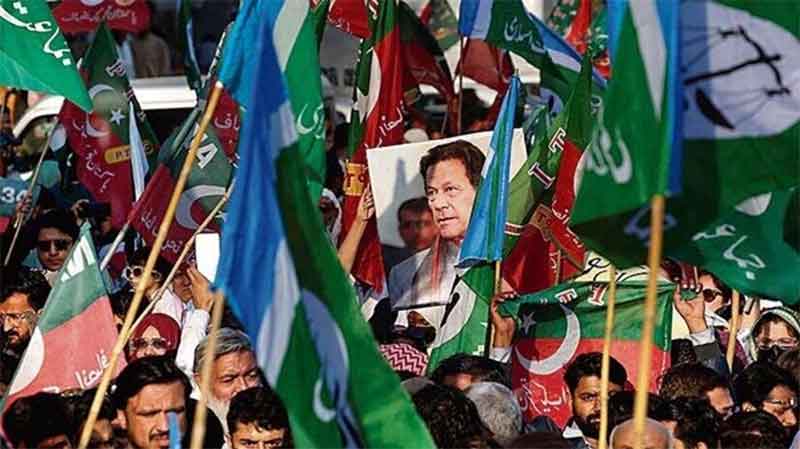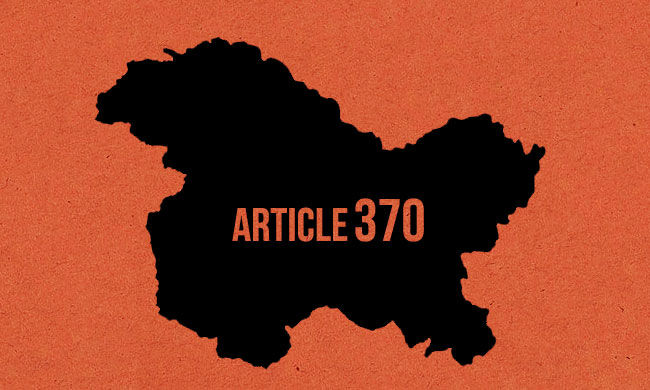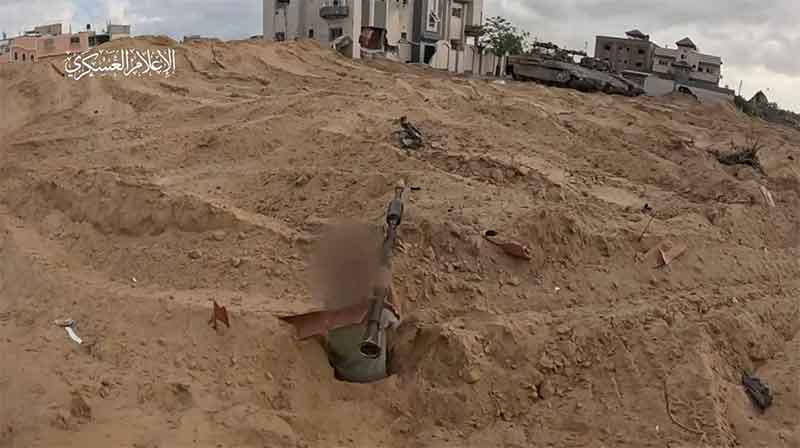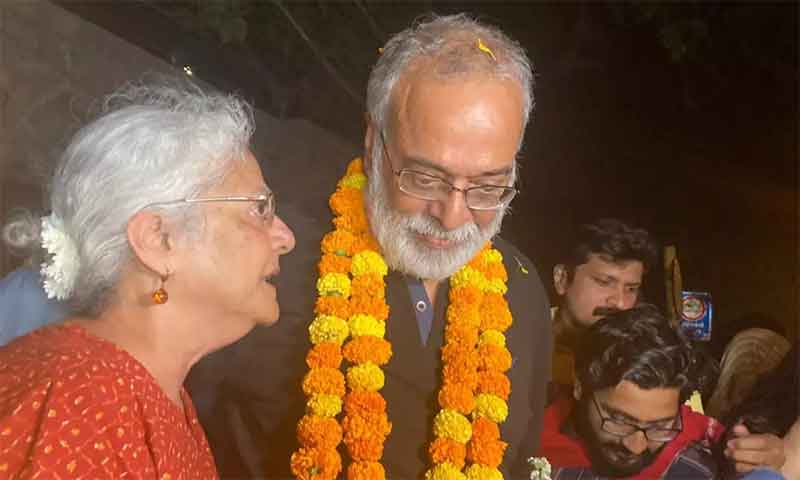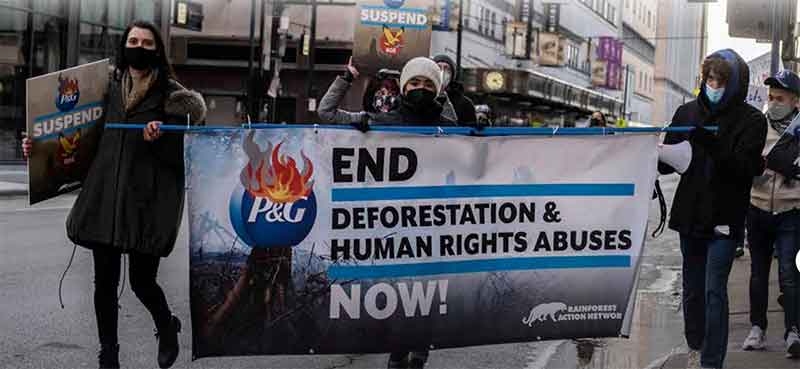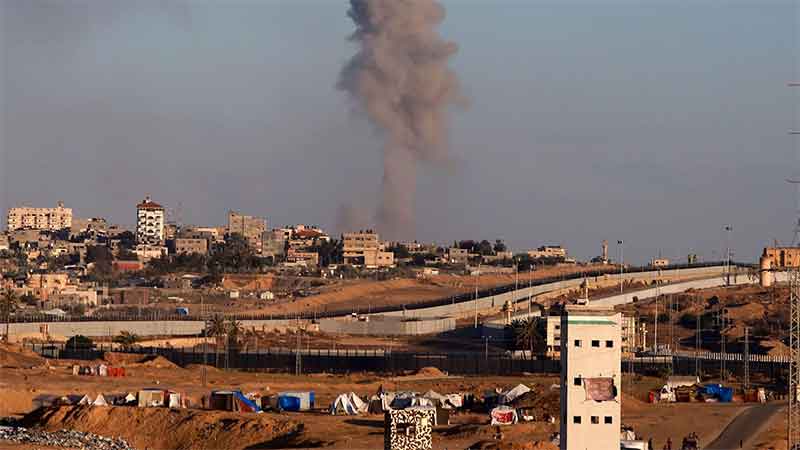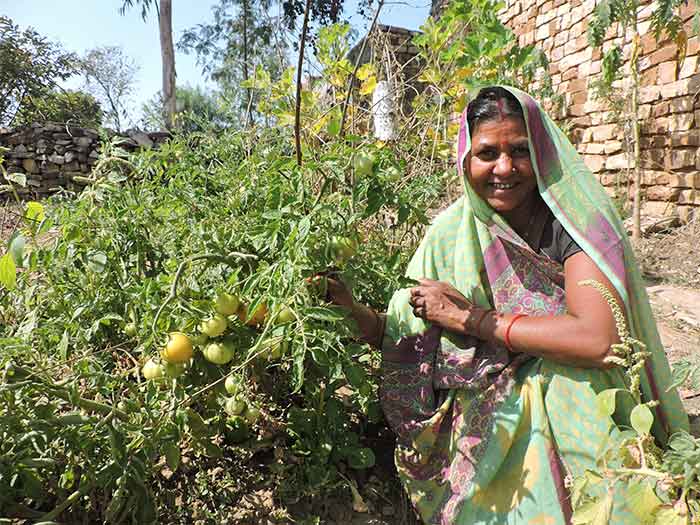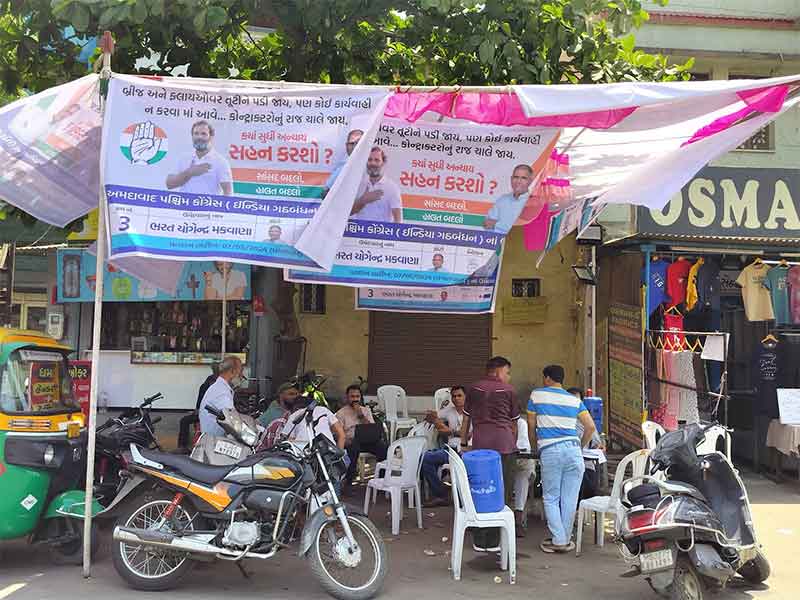
Anuradha Bhasin is the Managing Editor of the ‘Kashmir Times’. She is the author of the book ‘A Dismantled State: The Untold Story of Kashmir after Article 370’, published by Harper Collins India (2022), and has contributed to several anthologies and monographs, besides Indian and international publications. She is presently a Senior JSK Journalism Fellow at Stanford University, the USA. In conversation with journalist Amit Sengupta
How is the poll scenario shaping up in the Valley? Why is the BJP not contesting in the Valley despite its muscular claims of having restored peace and normalcy, etc?
Perhaps, for the first time in the Valley, we see more enthusiasm on the ground in parliamentary elections, and this is tied to the lack of representation and democratic space in Jammu and Kashmir since the watering down of Article 370. Assembly elections have not been held in the erstwhile state since 2014. The state has been demoted into two union territories, with Ladakh completely bereft of an assembly, and political voices have been silenced under suppression. The 2024 elections in the state, particularly in the Valley, can be seen as attempts by the electorate to assert their democratic rights, and by the political parties to reclaim their lost space.
It came as a surprise that the BJP, which has contested elections in Kashmir in the past, did not field a single candidate in the Valley! It is surprising because in the last five years they have tried every tactic to increase their base in Kashmir and manipulate Kashmir’s political landscape to their advantage. They have suppressed the main regional political players and the Congress in J&K by the use of strong-arm tactics, which include jailing and defaming politicians – calling them ‘corrupt or pro-terrorists’. They have engineered splits in political parties, weaned away members from these parties, and have created several proxy groups.
More importantly, in the most egregious case of Gerrymandering, the delimitation of constituencies is seen as helping the BJP. Despite all this, they are not confident of winning any seat – even getting a respectable number of votes – because they are aware of the deep-rooted anger against them, not only in the Valley, but also in the ‘Hindu heartland’ of Jammu region, as well as in Ladakh.
This is why they have decided to back proxy candidates in the Valley. They are still so nervous, that on frivolous pretexts, the polling date in the Anantnag-Rajouri constituency, which was specially carved out to benefit the BJP, has been shifted arbitrarily.
All this is ironically at odds with their narrative of normalcy, improvement and progress in J&K — post-2019. Kashmir has played a pivotal role in their electioneering narratives across the country in all elections in the past. The BJP is today finding it hard to believe its own lies on Kashmir! That is why it is choosing to cower behind proxies, while refusing to wage its own battle against the regional political parties and the INDIA alliance.
Why is the BJP not contesting the key constituency of Anantnag-Rajauri? Who are its proxies? Do the proxies have any social credibility and political support among the people?
The reason is the same as rest of the Valley. Yet, this constituency is exceptional. As I mentioned earlier, it was carved out specially to suit the BJP by setting aside all considerations of connectivity, geographical location and cultural congruity. It was speculated that the BJP aimed to plant its first saffron flag in the Kashmir region by combining two incongruous areas from the Jammu and Kashmir province. The boundaries of this constituency have been so created that they not only dilute the Kashmiri-Muslim homogeneity, it has a sizeable number of Hindus (Hindu Paharis from Rajouri-Poonch and Kashmiri Pandits from Anantnag), Muslim Paharis and the nomadic Gujjar-Bakerwal community (all Muslims).
Battle-lines in Rajouri and Poonch are often drawn on ethnic lines between Paharis and Gujjars. The BJP has further sharpened the cleavages by granting Paharis the ST status which was earlier enjoyed only by the Gujjars and Bakerwals. The explicit aim behind doing so was to wean away the Pahari vote bank – which does not seem to have worked on the ground.
The actions of the BJP government since 2019 have led to an acute sense of political, economic and social disenfranchisement all over, and no amount of fake appeasement is going to work. People across the country are reeling under threats of mass unemployment and a model of lopsided development that is less beneficial to people and extremely exploitative. That is also true of this region.
The proxies are said to be Ghulam Nabi Azad’s DPAP, which has no significant presence here, and other fringe groups like the J&K Nationalist Front. There is also the Apni Party (headed by ex-PDP minister Altaf Bukhari) in fray. While, in this constituency, it appears to be a direct fight between Mehbooba Mufti of the PDP and Mian Altaf of the National Conference, the Apni Party candidate, Zafar Iqbal Manhas – a Pahari writer turned politician – enjoys a bit of influence but that may not be of much reckoning in comparison to the other two heavy-weights in the fray. Both Mehbooba and Mian Altaf enjoy huge respect and following on both sides of the Mughal Road.
It was thus feared that the BJP, which is putting its weight behind the Apni Party here, would try to manipulate things by getting the elections postponed.
What compelled the INDIA alliance to split?
I cannot pin-point the reasons, but I can only speculate. Presumably, it is just petty egos at play, besides traditional NC-PDP rivalry. Indeed, it is unfortunate and shouldn’t have happened, but I think it became irreconcilable after Omar Abdullah announced the three candidates from the Valley unilaterally without consulting other members of the Peoples’ Alliance for Gupkar Declaration (which is part of the grand INDIA alliance).
Does Mehbooba Mufti stand a chance in Anantnag?
It appears to be a tough fight, and, from what I see, it could be either Mian Altaf or Mehbooba. They are both strong candidates. Mian Altaf is highly respected among the Gujjar-Bakerwal community – who also view him as a spiritual leader. He also earns a lot of respect among other communities. Mehbooba is extremely strong in Anantnag and Pulwama (though, in 2019, she was defeated from there in the parliamentary elections – which was linked to the anger against the BJP-PDP coalition government that she headed). PDP has also made inroads into Rajouri-Poonch and the party wields some influence among both the nomadic population and Paharis.
However, much will depend on many factors. Whose vote will Apni Party cut into and how much? Would there be some manipulation by the BJP? What would be the voting percentage in Anantnag which has been prone to boycott calls in the past? We don’t see any boycott calls in the current scenario, but it is important to remember that this is the most militarized constituency in the state.
Is it true that Hindus of Jammu are unhappy with the BJP? Are there fears of outsiders and land-grabs? Is it true?
Yes, this is true. Land-grabs by corporates and forcible occupation for development projects has dislocated many people when they completely changed the architecture of land-related laws in such a way that people who were rightful owners under the previous system are now being deemed as encroachers. You see, the state’s land-related laws were exceptional and distinct. There are also fears that by opening government jobs and business contracts to outsiders, people from Jammu will be pushed to the margins. The fears are more pronounced in Jammu because any demographic influx would have a more profound impact in this area which is geographically and culturally in proximity with mainland India, and which is also peaceful.
Why is Ladakh protesting? Will BJP lose in Ladakh?
The anger and unrest in Ladakh, half of which celebrated the revocation of Article 370, is even more acute. They were promised concessions and protections like the 6th schedule, but the BJP has backtracked. They have been more disenfranchised than the rest of the erstwhile state. Besides, the anger also stems from the geographical location of the area. We are talking about less than 300,000 people spread and sprawled across a territory of 60,000 square kilometers with sub-zero temperatures. Life is extremely difficult in Ladakh and the small and scattered population of the region is extremely conscious about the fact that their lives are dependent on the ecological preservation of the region.
The Narendra Modi government’s policies support crony capitalists who are out to devastate the ecology of the area with their unscientific development models, and they have also brought China on their doors. Both things are seen as tangible threats to the people’s existence. Hence, the recent protests in Ladakh. So unprecedented is the anger that Kargil (Muslim majority), and Leh (Buddhist majority), which have had severe differences in the past, are now totally united in this battle.
Unfortunately, the Congress alliance seems to have not worked here either. The picture is still not clear, but NC is fielding its candidate from Kargil and Congress has also announced its candidate from Leh. If that happens, the BJP will still lose, but it will weaponize the old, sub-regional divisions between Kargil and Leh.
What are the real issues in Kashmir after the clampdown and the abrogation of Article 370? Has the alienation sharpened?
I have already mentioned some of the issues. In short, it is about political disenfranchisement, political demotion, unemployment, reckless plunder of J&K’s natural resources in the name of development which is not sustainable, and, this is playing with the Himalayan region’s already fragile ecology. The main issue is about the loss of land, and the associated fears about it. In addition, the situation of civil liberties is at its lowest ever. Besides, as people are beginning to understand the full import of the abrogation of Article 370 in their lives, the alienation is sharp and deepening.
As a journalist and editor you were harassed and hounded. Please tell us about it. Why did you leave India?
There were several ways of targeting, including the forced closure of the Srinagar office of the Kashmir Times in October 2020, the unlawful seizure of all our office infrastructure, the withdrawal of government advertising – which was in retaliation to our critical reporting on the Modi government’s policies in Kashmir and my petitioning the Supreme Court against the internet shut down. Apart from this, they have been repeatedly sending income tax and labour court notices, that are completely fabricated cases and that keeps us involved in long-drawn litigations. All this made it difficult for us to survive as a newspaper.
Till 2022, we continued to publish the daily from Jammu, though the publication was erratic and would make it to the stands only on some days. Then it just became impossible. However, we sprung back. We revived the Kashmir Times in a digital format in November 2023 – which is a small effort.
I have not left India. I came to the US in 2022 on a journalism fellowship, and, as part of the fellowship, I am working on ‘combating information deserts under harsh censorship’. I am experimenting with my learning here by reviving the Kashmir Times in a different space. Once this fellowship ends, the experiment will continue, and I will return, but once I do, I know it would be extremely difficult to navigate the challenges of surviving as a journalist because of the ecosystem of complete annihilation of journalism in Jammu and Kashmir under the government’s suppression.
Tell us about the situation of press freedom and journalists in Kashmir.
Civil liberties are in tatters and the journalists are the worst impacted because the government does not want anybody to question their false narratives of normalcy, progress and their so-called popularity here. Journalism in J&K has always been challenging, but after 2019 – there is a direct assault on the freedom of the press by the government. Journalists have been slapped with criminal cases, jailed, interrogated, intimidated, and their devices have been confiscated for the work they do. Many have been put on no-fly lists. They have also canceled the passports of some journalists. The net result is either silence or abject obedience.
Amit Sengupta is a senior journalist



